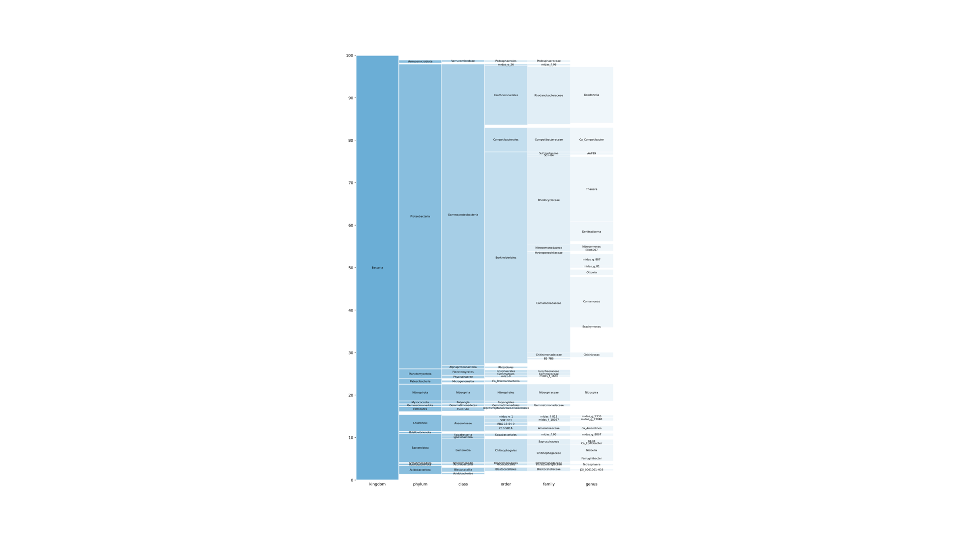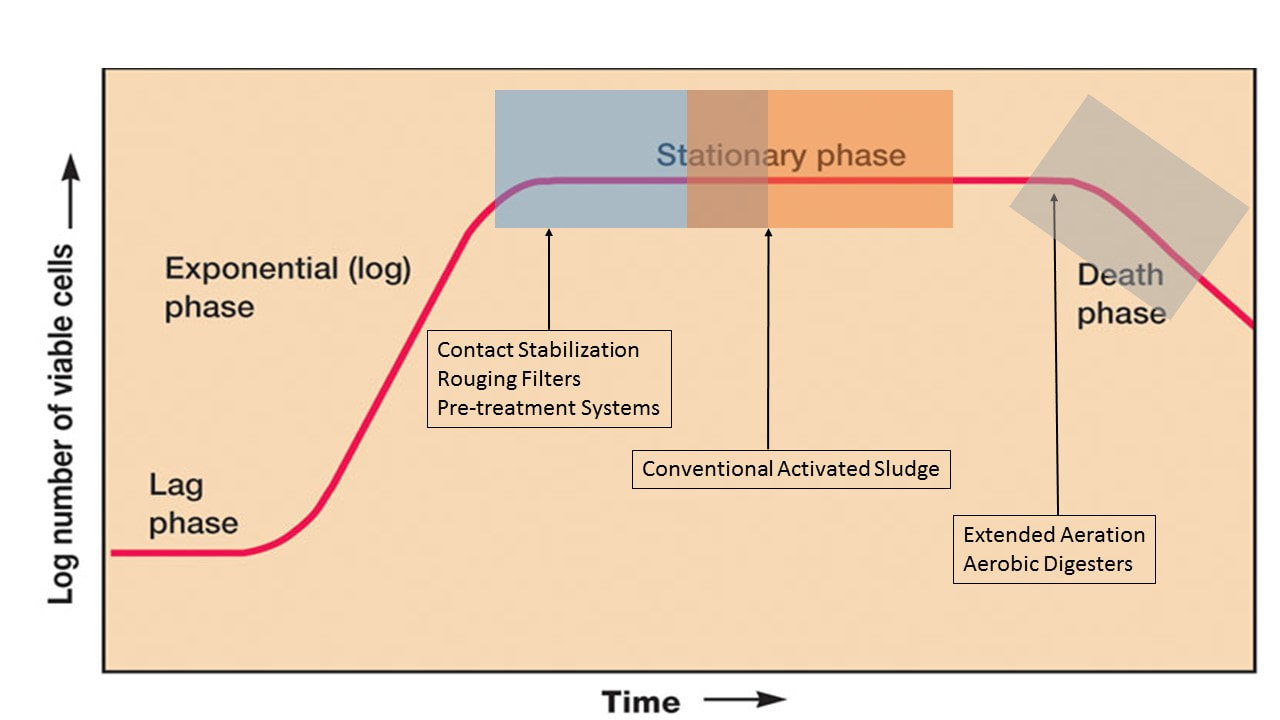Bacteria are classified in a hierarchical taxonomy, from the broadest categories to the most specific: kingdom, phylum, class, order, family, genus, species, and in many cases, subspecies or strains. Some times, an MCA is unable to identify a population to the genus level, but the higher (more general) taxonomic levels can still provide some information: for example, the Firmicutes, which contain Bacillus and Clostridium, generally contain either facultative or obligate anaerobes. High levels of Firmicutes may suggest low dissolved oxygen in a system.
Our taxonomy chart is similar to stacking a bunch of bar charts side by side, showing the relative amounts of each taxon present at a taxonomic level, but with a twist. The first column covers the kingdom. In the example below, this kingdom is Bacteria, and it represents over 99% of the sequences. The next level shows the different phyla present in the sample, with Proteobacterium being the most-represented phylum. The chart repeats this all the way down to the genus level.



 RSS Feed
RSS Feed